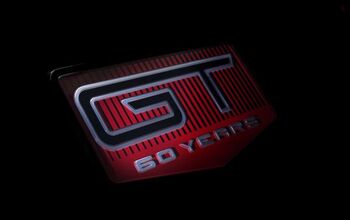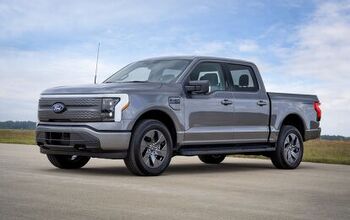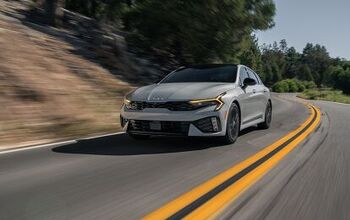QOTD: Which Model Deserved One More Generation?

We’ve asked you before about the particular brand you’d resurrect if given the power to bring just one back from the dead. A different Question of the Day also inquired which models trumped the previous generation by bringing fresh ideas and improvements to the redesign.
Today, we follow similar lines and ask which model was killed off too soon; which vehicle deserved one more generation.
Consumer tastes flip-flop, company finances ebb and flow, regulations are ever changing, and the names on the doors in the executive suite are not permanent. These are just a few of the factors which can spell an untimely end for a vehicle offering that at its heart is solid, desirable, and good. Here’s where you get to pick a model, and give it a stay of execution with your historical 20/20 vision goggles firmly secured.
There’s only one rule today: The model you’re saving must be continued from the time the final version left off. In other words, you can’t bring back the Honda Prelude for a new generation in 2017. It would have to be a sixth-generation Prelude, for 2002. And speaking of Japanese cars, here’s my example.
The lovely Toyota Camry Coupe deserved another generation. Shown above in final, 1996 V6 SE format, Toyota decided to forego both wagon and coupe formats with the 1997 redesign. This was a mistake. The official successor model (in 1999) was the swoopy and more awkward looking Solara coupe and cabriolet. Neither of those ever had the appeal of the Camry Coupe, nor its simple and honest styling.
Not that it’s awful, per se, it just doesn’t have the same essential goodness. The market for a front-drive midsize Japanese coupe still existed, as Honda proved (right up to 2017) with the Accord Coupe. Nissan played the game for a while with the Altima Coupe, though it never had the mainstream appeal of the Accord or Camry options. But I think I’ve made my point.
It’s now your turn. Tell us which cancelled model really deserved another generation.
[Images: Honda, Toyota]

Interested in lots of cars and their various historical contexts. Started writing articles for TTAC in late 2016, when my first posts were QOTDs. From there I started a few new series like Rare Rides, Buy/Drive/Burn, Abandoned History, and most recently Rare Rides Icons. Operating from a home base in Cincinnati, Ohio, a relative auto journalist dead zone. Many of my articles are prompted by something I'll see on social media that sparks my interest and causes me to research. Finding articles and information from the early days of the internet and beyond that covers the little details lost to time: trim packages, color and wheel choices, interior fabrics. Beyond those, I'm fascinated by automotive industry experiments, both failures and successes. Lately I've taken an interest in AI, and generating "what if" type images for car models long dead. Reincarnating a modern Toyota Paseo, Lincoln Mark IX, or Isuzu Trooper through a text prompt is fun. Fun to post them on Twitter too, and watch people overreact. To that end, the social media I use most is Twitter, @CoreyLewis86. I also contribute pieces for Forbes Wheels and Forbes Home.
More by Corey Lewis
Latest Car Reviews
Read moreLatest Product Reviews
Read moreRecent Comments
- ToolGuy First picture: I realize that opinions vary on the height of modern trucks, but that entry door on the building is 80 inches tall and hits just below the headlights. Does anyone really believe this is reasonable?Second picture: I do not believe that is a good parking spot to be able to access the bed storage. More specifically, how do you plan to unload topsoil with the truck parked like that? Maybe you kids are taller than me.
- ToolGuy The other day I attempted to check the engine oil in one of my old embarrassing vehicles and I guess the red shop towel I used wasn't genuine Snap-on (lots of counterfeits floating around) plus my driveway isn't completely level and long story short, the engine seized 3 minutes later.No more used cars for me, and nothing but dealer service from here on in (the journalists were right).
- Doughboy Wow, Merc knocks it out of the park with their naming convention… again. /s
- Doughboy I’ve seen car bras before, but never car beards. ZZ Top would be proud.
- Bkojote Allright, actual person who knows trucks here, the article gets it a bit wrong.First off, the Maverick is not at all comparable to a Tacoma just because they're both Hybrids. Or lemme be blunt, the butch-est non-hybrid Maverick Tremor is suitable for 2/10 difficulty trails, a Trailhunter is for about 5/10 or maybe 6/10, just about the upper end of any stock vehicle you're buying from the factory. Aside from a Sasquatch Bronco or Rubicon Jeep Wrangler you're looking at something you're towing back if you want more capability (or perhaps something you /wish/ you were towing back.)Now, where the real world difference should play out is on the trail, where a lot of low speed crawling usually saps efficiency, especially when loaded to the gills. Real world MPG from a 4Runner is about 12-13mpg, So if this loaded-with-overlander-catalog Trailhunter is still pulling in the 20's - or even 18-19, that's a massive improvement.




































Comments
Join the conversation
Where all the Coupes gone ?!? It would be nice to see new .. Monte Carlo , .. Riviera .. etc.. .. and whare is Eldorado >P .. > or .. CTS-coupe (old one was wicked , sharp design@!
Ford Flex even though, it's not dead yet. Just sleeping.